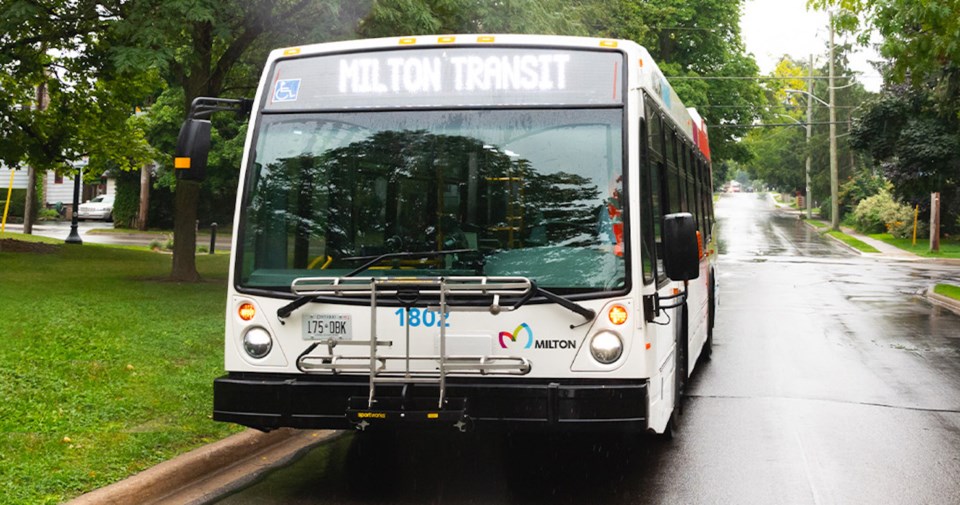HALTON REGION - The future of public transportation system in Halton could significantly change, as a new study examines the possible amalgamation of municipal transit services.
Back in 2017, Halton regional council endorsed the identification of 156 kilometres of regional roads — such as Dundas Street and Bronte and Trafalgar roads — as key transit priority corridors to support future travel demand.
The Region has since been working with local municipalities to develop the governance and service delivery alternatives for transit on the corridor for 2031 and 2041. After considering 13 concepts, the project team has narrowed it down to three potential scenarios.
- Amalgamation of transit service with a commission composed of Halton Region and local municipalities: A commission would be responsible for planning, building, maintaining and operating the transit priority corridor network, as well as local and specialized transit.
- Amalgamation of transit service with a commission composed of the local municipalities only: A commission would be responsible for operating the transit priority corridor network, as well as local and specialized transit. The Region would plan, build and maintain the transit priority corridor network.
- Regional special purpose corporation or department: Halton Region forms a special purpose corporation or new regional department to plan, design, build, maintain and operate the transit priority corridor network, local and specialized transit service. Local municipalities are key stakeholders and contribute to transit service decision-making at regional council.
Lee Anne Jones, the Region's director of infrastructure planning and policy, presented the result of the Phase 1 study to council members at their latest meeting. Jones said that the three options “would offer viable models for operationalizing the transit priority corridors.”
Jones added that “more detailed analysis would be required to differentiate between each of these three governance models.”
As earlier explained, the corridors are configured through infrastructure or operational improvements to improve travel speed and reliability for transit using the corridor. The enhancements could range from modifying traffic signals to provide priority to transit at an intersection expanding over time to fully dedicated transit vehicle lanes.
At the meeting, some concerns were raised — from financial feasibility to engagement with local councils.
Councillor Tom Adams asked about how each of the existing communities will be treated fairly from a financial perspective, given the different investments that each have made.
“Oakville has a very significant investment in its transit system by comparison to some of the other communities,” the Oakville representative said. “How would we be treated fairly in terms of the financial contribution?"
Jones responded that as they move to the next phase, the team will examine the financial implications of each model concept and ensure that the existing structure of each local transit authority is incorporated into a final solution in a fair and equitable manner.
Echoing the sentiment, Burlington councillor Rory Nisan said, “No municipality should be subsidizing any other municipality's public transit system through this. And as long as that remains a guiding principle, I think we can make a ton of progress here.”
In Halton Hills, residents face significant challenges accessing regional services, a problem faced by many others across the region.
“That inter-municipal service is absolutely essential,” said Halton Hills Mayor Ann Lawlor. “We are spending a lot of money as a municipality in enabling people to get health care from Halton Hills to Oakville and Milton and so forth.”
As the pace of development speeds up, Lawlor said that the urgency of public transit is “absolutely going to accelerate.”
Halton Hills councillor Jane Fogal added: “I think we've got some work going forward, but we're on the right track and I appreciate this report.”
Meanwhile, in response to remarks about “empty buses” running in another municipality, Milton councillor Sameera Ali said transit should not be viewed solely through a profit lens.
“Transit is an investment in our community,” Ali said. “It's just the right thing to do to provide them that service.”
The 'Transit Priority Corridor Operationalization Study' report for Phase 1 has been referred to local councils for review. Following their endorsement, the report will be brought back to the regional council for approval.
